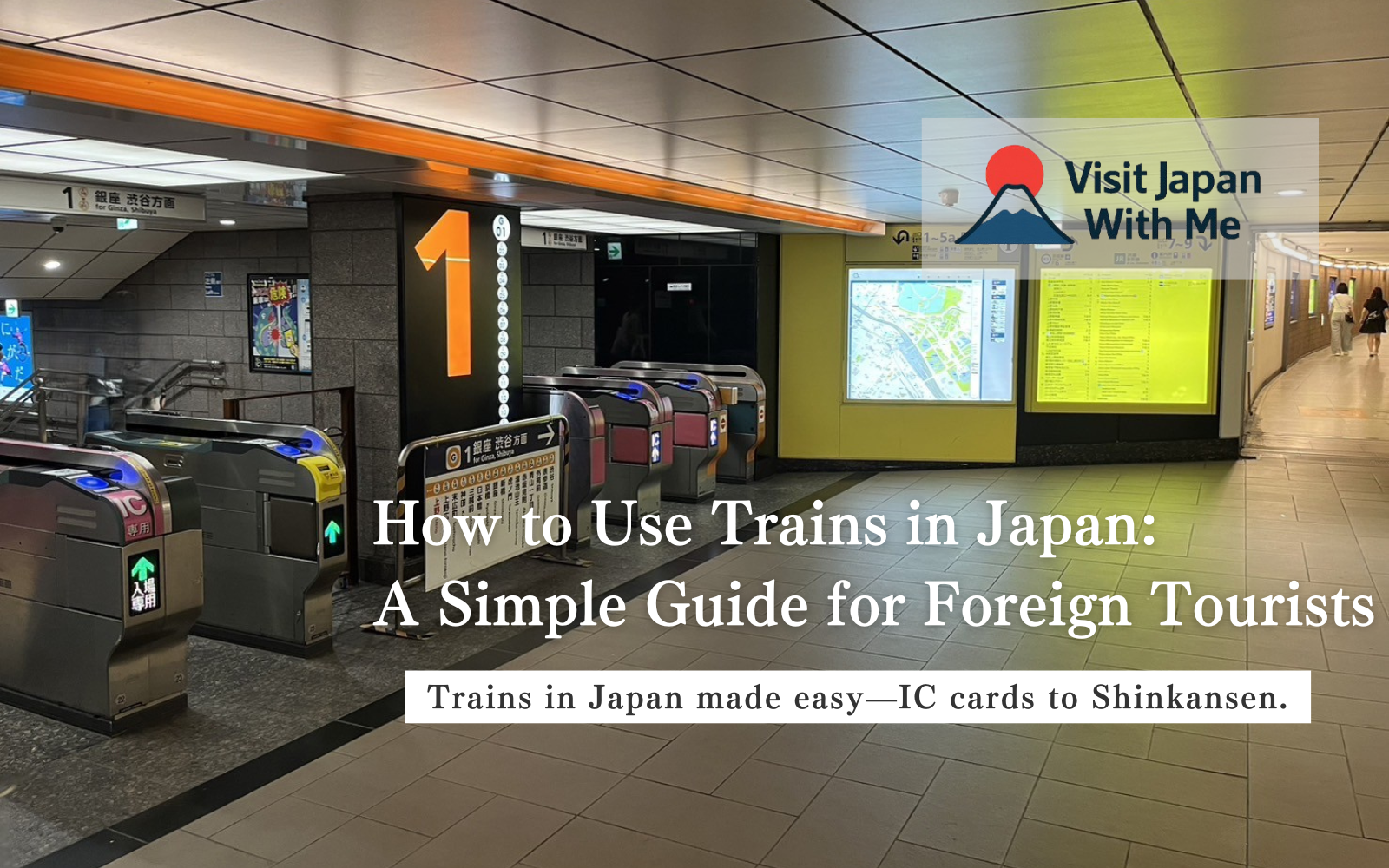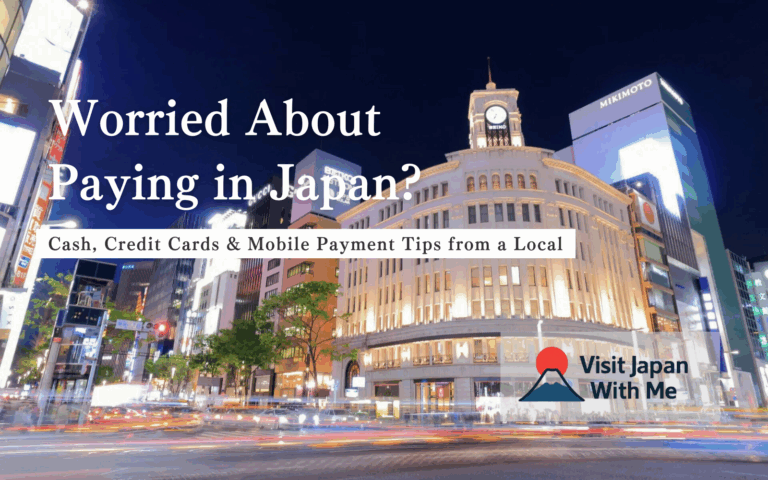How to Use Trains in Japan: A Simple Guide for Foreign Tourists
Taking the train in Japan is one of the best ways to get around—but if it’s your first time, the system can seem overwhelming. From IC cards to bullet trains, here’s everything you need to know to travel smoothly like a local.
🗾 More Japan travel tips coming soon!
We’re a local team based in Japan, and we’re adding more helpful tips and real insider info soon.
Don’t miss out—bookmark this site and come back for fresh updates!
🔖 Bookmark Now🚇 Why Trains Are the Best Way to Travel in Japan
Japan’s train network is clean, punctual, and covers almost every part of the country. Trains are often faster and more reliable than cars or buses, especially in big cities like Tokyo and Osaka.
🌠 IC Cards (Suica, Pasmo, ICOCA, etc.)
If you’re visiting Japan and planning to take trains or subways, getting a transportation IC card is one of the smartest things you can do. It’s a prepaid, reloadable card that you simply tap at ticket gates—no need to figure out fares or buy a ticket each time.
These cards work on almost all trains, subways, and buses in Japan’s major cities, including Tokyo, Osaka, Kyoto, Fukuoka, and more. They’re also handy beyond transportation—you can use them at convenience stores, vending machines, coin lockers, and even some cafés.
Getting started is easy. You can buy an IC card at most airport train stations or major JR stations. It costs around ¥2,000 (about $20), which includes a ¥500 deposit. The rest of the amount is your travel credit, and you can top it up anytime at ticket machines or convenience stores.
There are several types of IC cards, like Suica, PASMO, and ICOCA, but they all work in similar ways and are mostly interchangeable across regions.
If you prefer to travel light, you can also use a digital version like Mobile Suica on your iPhone or Android. It’s especially convenient if you want to avoid carrying extra cards.
For most travelers, having an IC card makes moving around Japan much faster and easier—it’s something I always recommend, even for short stays.
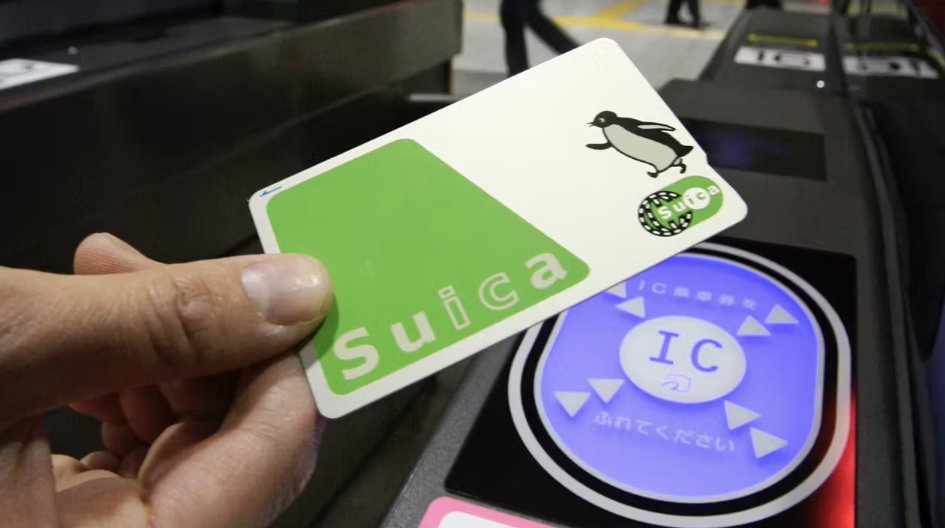
🛒 How to Buy a Suica Card
Buying a Suica card is simple, especially if you’re arriving in Tokyo. You can get one at almost any JR East station, including major hubs like Tokyo, Shinjuku, or Ueno.
Just look for a JR ticket machine with English language support, or head to a JR ticket office (Midori no Madoguchi) if you’d prefer to ask someone directly. At the machine, select the “IC Card” option and follow the on-screen instructions to purchase a new Suica. It only takes a minute or two.
If you’d rather not carry an extra card, you can also set up Mobile Suica on your smartphone. It works with Apple Wallet (for iPhone) or Google Wallet (for Android), and lets you charge your card with a credit card—no physical card needed.

🌐 Budgeting Tip
If you’re planning to take several train rides in one day, get a day pass or use an IC card for ease.
🧳 Luggage and Lockers in Japan
If you’re traveling with a suitcase in Japan, a little planning goes a long way. Trains and stations are incredibly efficient, but space—especially during rush hours—can be tight.
Try to avoid large suitcases during peak commute times (7–9am and 5–7pm), especially on city subways and commuter trains. Trains can get very crowded, and there’s often no space for luggage in the aisles.
Most major stations in Japan have coin lockers where you can store your bags for a few hours or even overnight. Prices usually range from $2 to $6 (¥300–¥900) depending on the size. Lockers come in small, medium, and large sizes, and you can pay with coins or an IC card like Suica or PASMO.
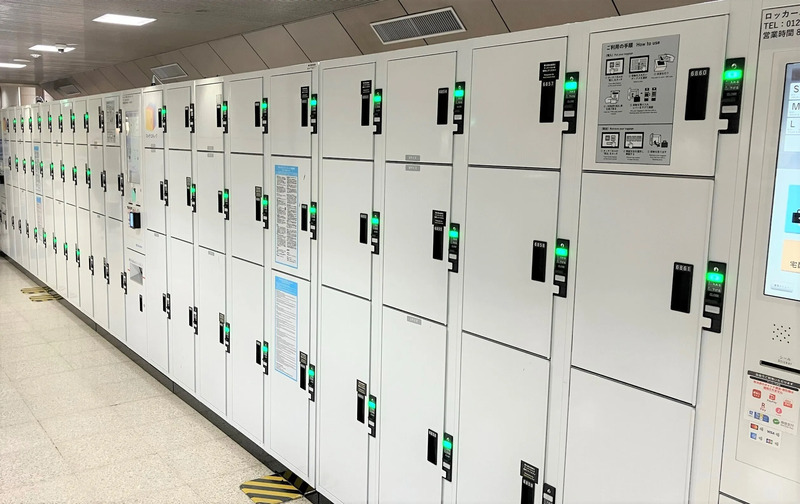
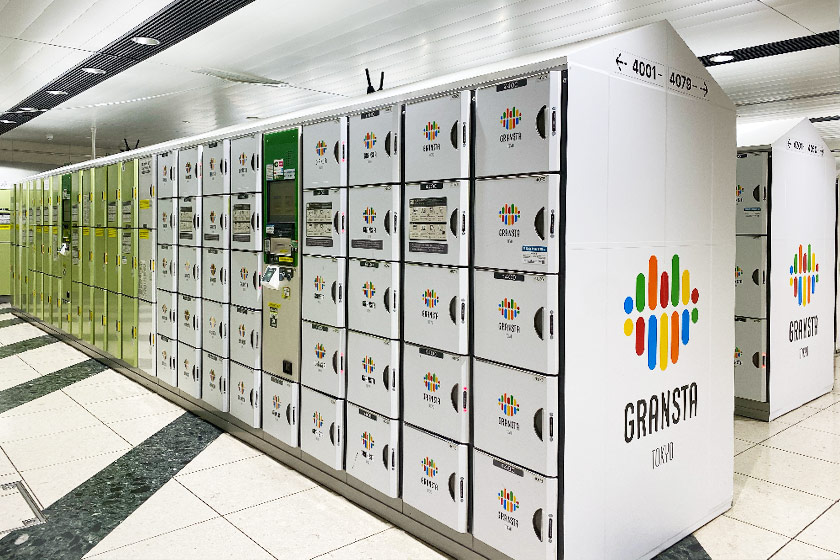
My experience as a local: When I have a day out in Tokyo with shopping or meetings, I always stash my bag in a locker—it frees me up and keeps me from lugging it around on crowded trains.
For bigger travel days, like moving between cities, be mindful of luggage size on the Shinkansen (bullet train). If your suitcase is larger than 160cm total (height + width + depth), you’ll need to reserve a special oversized luggage seat in advance. It’s free, but limited—so book early when reserving your seat.
Alternatively, many travelers (and locals!) use luggage delivery services to send bags between hotels. It’s reliable and surprisingly affordable, and can make your trip much easier.
🚅 How to Ride the Shinkansen (Bullet Train)
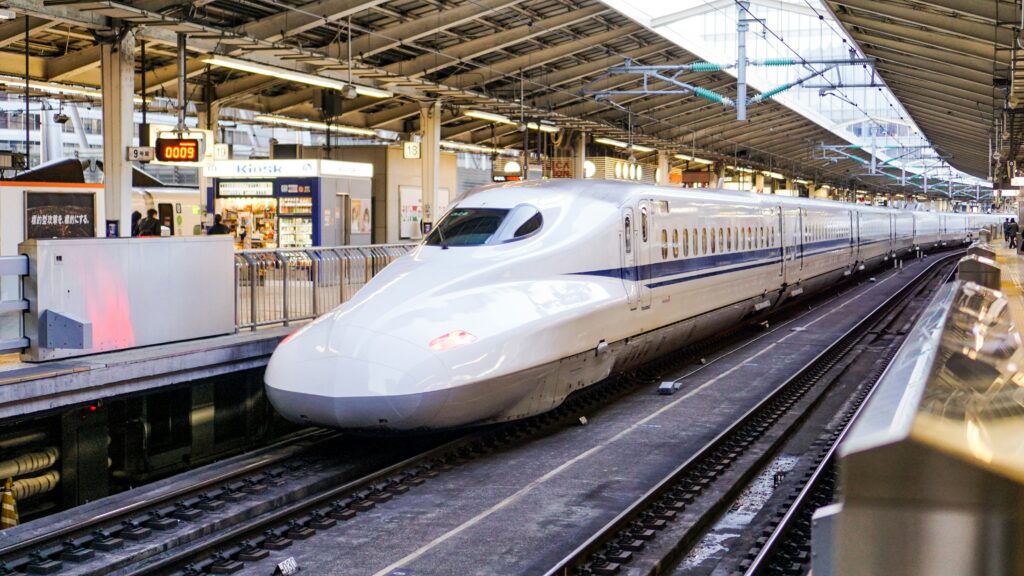
☑️🚄 Taking the Shinkansen: What You Need to Know
Riding the Shinkansen—Japan’s famous bullet train—is fast, comfortable, and surprisingly easy once you know how it works. Whether you’re traveling from Tokyo to Kyoto or heading up north, here’s how to make the most of your ride.
🎟️ How to Buy Shinkansen Tickets
You can buy Shinkansen tickets in a few different ways:
- At ticket machines or counters: Look for the green “Midori no Madoguchi” signs at JR stations. Staff often speak basic English, and many machines have English support.
- Online: Use services like JR East Train Reservation (for eastern Japan) or SmartEX (for Tokaido-Sanyo lines). Both offer English booking systems.
- With a Japan Rail Pass: If you have a JR Pass, you’ll need to activate it in advance. Then you can book seats at a ticket office or, in some areas, at a machine that accepts JR Pass reservations.
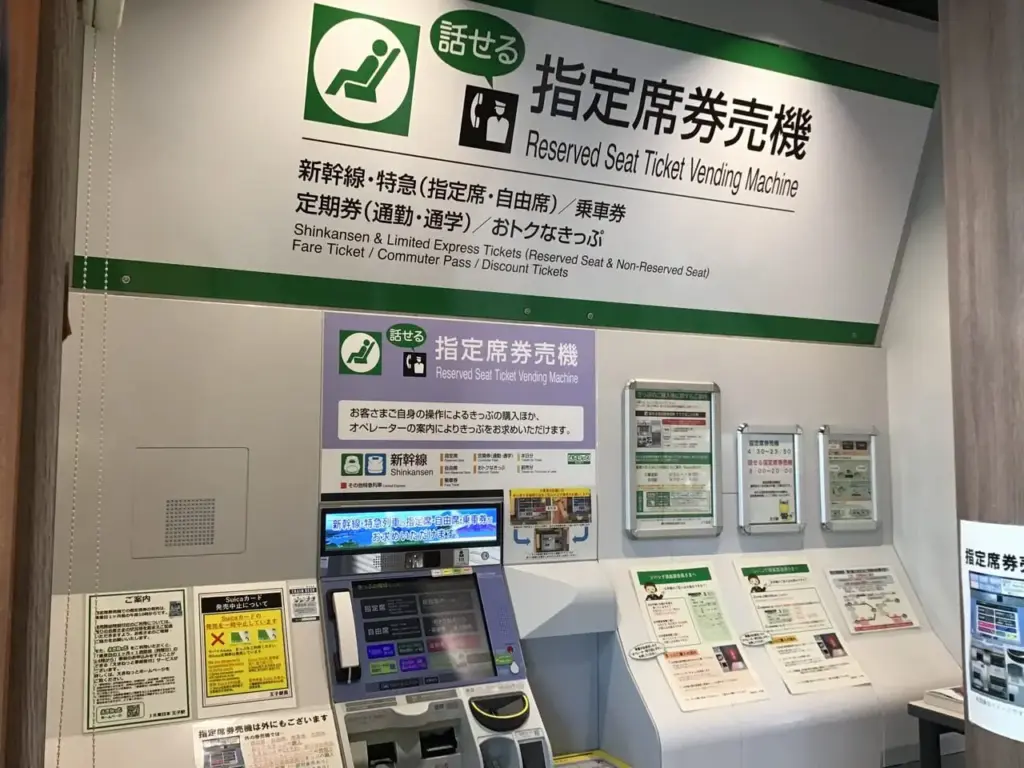

My experience as a local: I usually reserve online with SmartEX before busy weekends—it’s easier than lining up at the station, and I can choose my seat in advance.
💺 Reserved vs. Non-Reserved Seat
Shinkansen trains usually have both reserved (指定席 / shitei seki) and non-reserved (自由席 / jiyuu seki) cars.
- Reserved seats let you choose your exact seat in advance. You’re guaranteed a seat, and it’s ideal during peak seasons or when traveling with luggage.
- Non-reserved seats are cheaper and flexible—you just show up and sit wherever there’s space in the designated cars. But during busy times, you might have to stand.
Most travelers prefer reserved seats for peace of mind, especially on popular routes like Tokyo–Kyoto. If you’re traveling during holidays, weekends, or with a big suitcase, it’s definitely worth it.
🧳 Luggage Tip for the Shinkanse
If your suitcase is over 160cm in total size (height + width + depth), you must book a “seat with oversized luggage space” in advance. It’s free but limited—ask for it when reserving your seat.
🍽️ Can You Eat on Trains in Japan?
This is a common question for travelers, and the answer depends on the type of train you’re on.
🚋 Local Trains and Subways
On local trains, subways, and commuter lines (like the Tokyo Metro or JR Yamanote Line), eating is generally not recommended. These trains are often crowded, and eating in close quarters can be considered rude. A small drink or wrapped snack is usually okay, but full meals should be avoided.
Tip: If you’re hungry, grab something at the station and eat before boarding. Many stations have standing counters or small tables near convenience stores.
🚄 Shinkansen (Bullet Train)
On the Shinkansen, eating is not only allowed—it’s part of the experience! You’re welcome to bring your own bento box, snacks, or drinks onboard. You can also buy a hot or cold ekiben (train station bento) at the station, or from the trolley service that comes through the train.
My experience as a local: I always buy a seasonal ekiben before a Shinkansen trip. It’s part of the fun, and a nice way to enjoy regional flavors—especially when traveling between areas like Tokyo and Kansai.
Just be considerate: avoid foods with strong smells, clean up after yourself, and don’t talk loudly while eating. But overall, eating on the Shinkansen is relaxed and completely normal.
📱 Route-Finding Apps in Japan: What Locals and Travelers Use
Japan’s train system is incredibly efficient—but it can feel overwhelming if you’re new here. Thankfully, there are some great apps (in English!) that make route-finding simple and reliable.
🗺️ Google Maps
Yes, the app you already use works surprisingly well in Japan. Google Maps gives you live train schedules, platform info, and walking directions between stations. It’s great for quick checks when you’re on the go.
Tip: Be sure your location is turned on, and always double-check the train line color or name, especially if there are multiple platforms.
🚉 Navitime for Japan Travel
This app is designed specifically for tourists. It offers IC card fare estimates, JR Pass filters, airport connections, and even tells you whether a train is crowded.
It’s especially useful if you’re using a JR Pass and want to avoid non-JR lines. The interface is beginner-friendly and includes suggestions for the cheapest or fastest route.
My experience as a local: I often recommend this app to visiting friends. It’s perfect for trip planning—especially when you’re jumping between regions like Tokyo, Kyoto, and Hiroshima.
🚆 Japan Transit Planner (by Jorudan)
Another English-friendly option that’s very accurate. It lets you search by station names, time, and ticket type. You can even exclude bullet trains or choose to only show JR Pass-compatible routes.
This app is reliable for more complex itineraries—like planning a full day of sightseeing across several cities.
No matter which app you choose, it’s a good idea to download at least two so you have a backup. And don’t worry—free Wi-Fi is available in most major stations, or you can use a pocket Wi-Fi or eSIM during your trip.
🌐 English Support and Station Help
- Most signs and announcements in major stations are bilingual (Japanese + English)
- Staff at main JR stations usually understand basic English
- Tourist Information Centers often have free maps and staff who speak English
❓ What If You Miss Your Stop or Go the Wrong Way in Japan?
Don’t worry—it happens more often than you’d think, especially in big cities with complex train systems. Here’s what to do if things don’t go exactly as planned.
🚉 If You Miss Your Stop
Stay calm and get off at the next station. You’re not in trouble!
Go to the station staff and explain (even just pointing to your original stop on Google Maps is fine). In most cases, they’ll let you return on the next train without any penalty, especially if you’re just one or two stops off.
My tip as a local: This is very common, especially if you’re jet-lagged or distracted. Station staff are used to it and usually very kind.
↺ If You Took the Wrong Direction
If you realize you’re going the wrong way, just get off at the next stop and cross over to the opposite platform to go back in the right direction.
If you’re using an IC card, just keep tapping as usual—no special steps required. The system will calculate your fare correctly based on where you enter and exit.
💷 Will You Be Charged Extra?
- IC Card: No problem. You only pay for the distance traveled.
- Paper Ticket: You may need to use the Fare Adjustment Machine at your destination or ask a staff member. They’ll help you pay the correct amount—usually just a small difference.
🧳 Final Tip
If you’re ever unsure, just show your phone to the station staff—they’re usually happy to help, and many are used to assisting travelers.
Would you like the Japanese version of this next? Or should I include a small phrasebook section with useful train-related Japanese?
🌍 How Much Does a Train Ride Cost in Japan?
Train fares in Japan are generally affordable and based on distance. Here’s what to expect depending on where and how you travel.
🚇 Local Train Rides (Within Cities)
In major cities like Tokyo, Osaka, or Kyoto, local trains and subways usually cost between $1 and $2 per trip (about ¥150–¥220). If you’re transferring between different lines or companies, the fare may increase slightly.
Using an IC card like Suica or PASMO saves you the trouble of buying tickets for every ride—it also calculates the exact fare automatically.
🚄 Long-Distance Travel: Tokyo to Kyoto Example
A one-way Shinkansen ride from Tokyo to Kyoto on a standard train (Nozomi) costs about $100 (¥14,000) without a Japan Rail Pass. Reserved seats cost a little more, but give you guaranteed seating.
If you’re making a round trip or visiting other cities like Osaka or Hiroshima, a JR Pass may save you a lot of money—even though the up-front cost seems high.
Many Japanese people use early bird or discount options like Platt Kodama for cheaper Shinkansen tickets. These are slower trains but still comfortable.
🎫 Day Passes and Regional Tickets
There are several useful day passes for tourists, such as:
- Tokyo Metro 24-Hour Pass: ~$4–6 (¥600–800) for unlimited subway rides within Tokyo
- Kansai Thru Pass: Covers Osaka, Kyoto, Nara, Kobe (non-JR lines); available in 2- or 3-day versions
- Osaka Amazing Pass: Includes transport and entry to popular attractions
These passes are often worth it if you plan multiple rides in one day, or want to explore a region deeply without worrying about individual fares.
📊 Final Thoughts: Japan’s Train System Is Friendlier Than It Looks
At first glance, Japan’s train system can seem overwhelming—with all the lines, stations, and connections. But once you take your first ride, you’ll quickly realize just how efficient, intuitive, and traveler-friendly it really is.
Using an IC card takes the guesswork out of fares, and tools like Google Maps or Navitime make navigating stations easy—even if you don’t speak Japanese. And of course, riding the Shinkansen isn’t just transportation—it’s part of the adventure.
From quiet local trains to sleek bullet trains, riding the rails in Japan gives you a glimpse of daily life here—and a smooth, relaxing way to explore the country.
With just a little planning, you’ll be moving around like a local, discovering new places with confidence.
Let’s explore Japan together 🇯🇵✨

